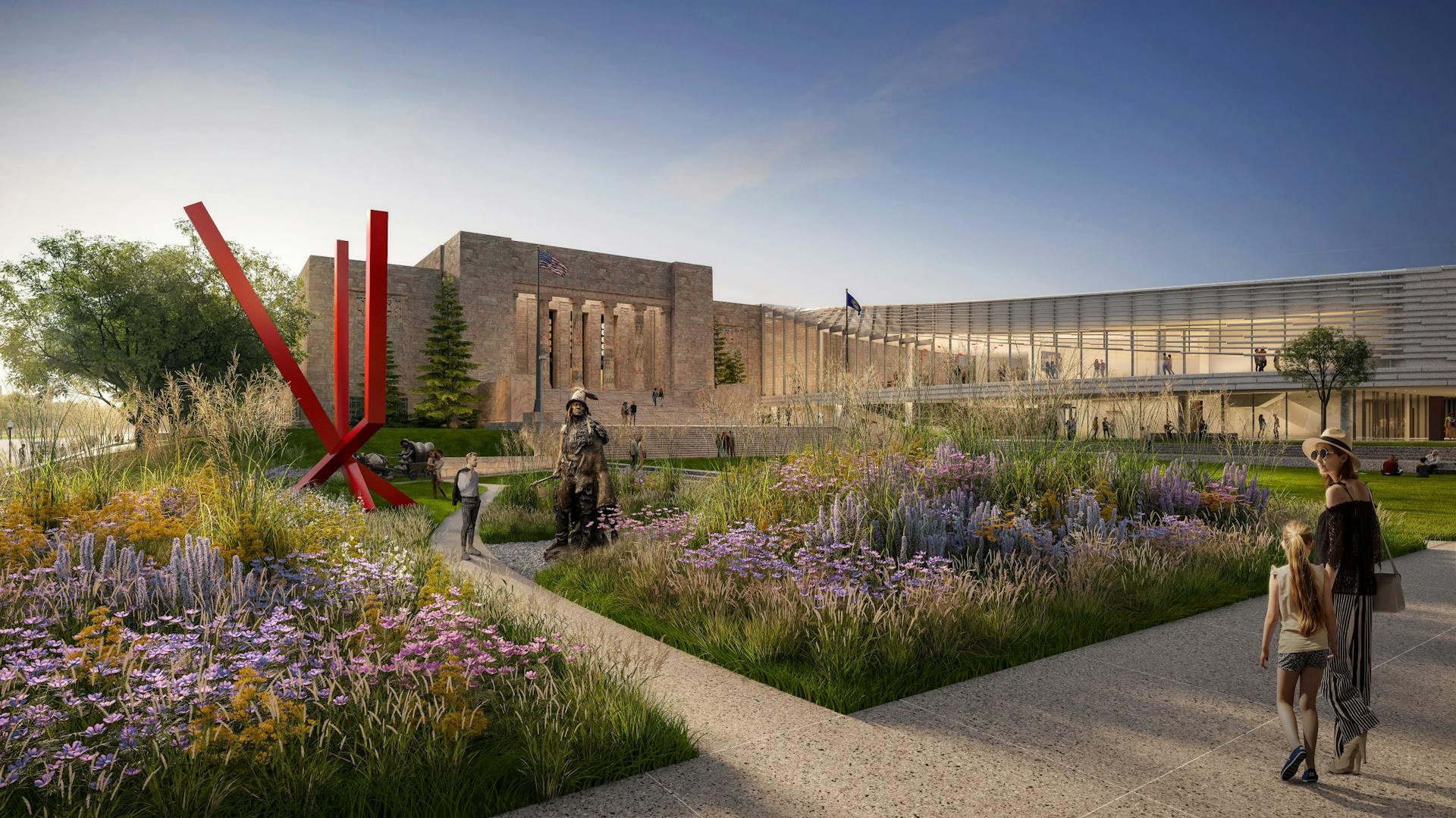Honoring Joslyn’s historic character while creating a fresh expression for the museum’s future has guided our design. Our comprehensive reconsideration of the museum grounds, the existing interiors, and the newest building all work together to create a more inviting entry for the growing spectrum of people that visit the Museum. Our goal has been to provide a harmonious place for guests, art, and gathering that will become a vessel for inspiration and creativity to flourish.
— Craig Dykers, 2024 expansion architect
Design Inspiration
The Hawks Pavilion is the centerpiece of a project that creates a new visitor experience of the Joslyn and its grounds while expanding gallery space by more than 40 percent for an historic and fast-growing collection. In Snøhetta’s design, led by architect Craig Dykers, the Hawks Pavilion extends directly out of the Museum’s existing buildings in the form of a curving, low-slung volume that emerges from the glass atrium that joins the original 1931 building with the 1994 addition. As it gradually twists upward, this structure becomes the walls of the day-lit exhibition galleries on the Hawks Pavilion’s second floor.
Honoring Joslyn’s identity while opening a more porous, inviting front, the expansion marks a new chapter in the Museum’s vision for public access to the arts through a comprehensive redesign. The expansion builds upon Joslyn’s rich history as an iconic landmark and cultural hub as it creates a dynamic, inclusive design that is open to all.
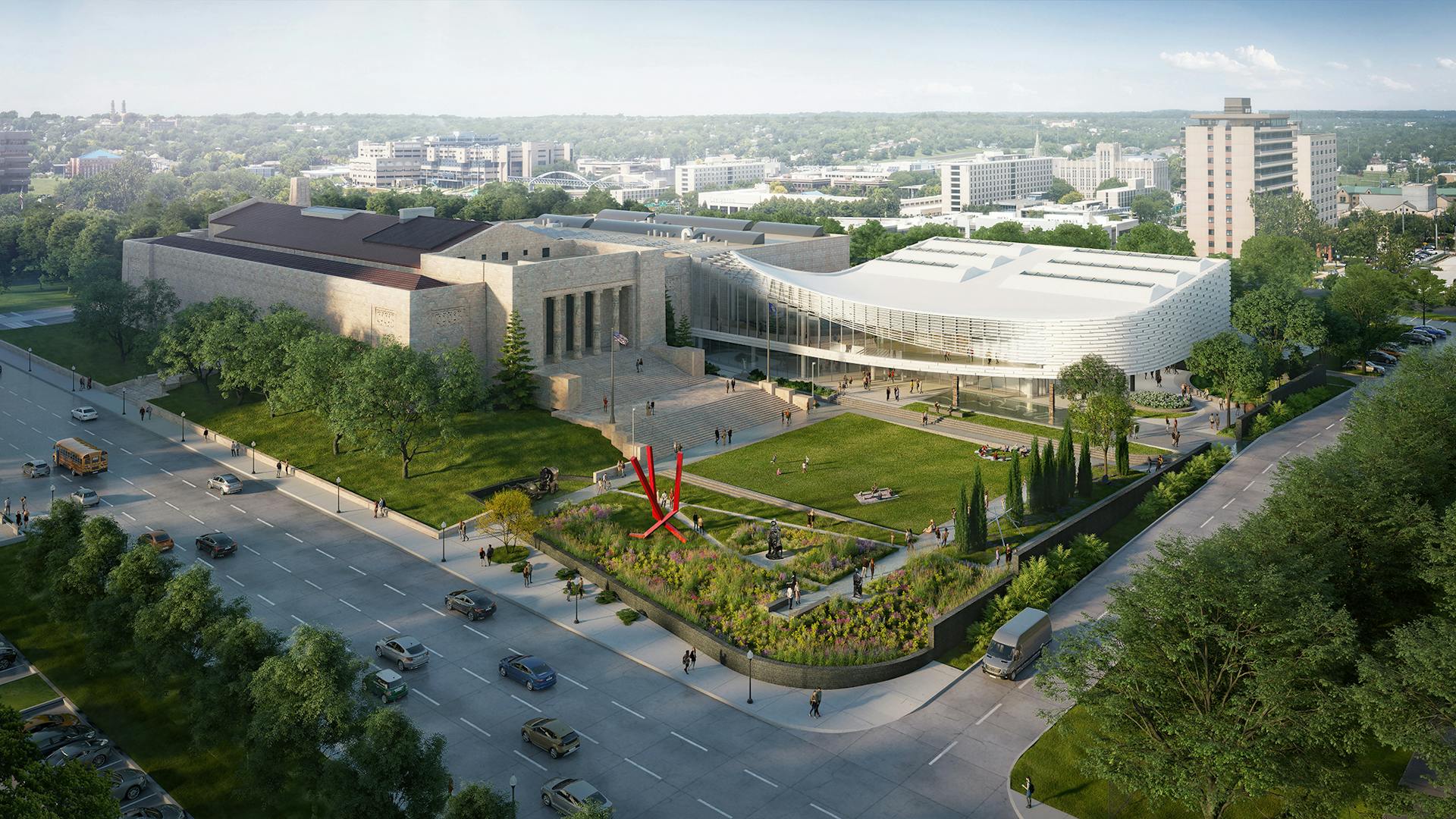
Complementing the Museum’s existing buildings—the Joslyn Building seeming to emerge from the earth; the Scott Pavilion appearing anchored to the ground—the new Hawks Pavilion seems to float atop two granite garden walls, with a transparent first floor enclosing a new entry atrium, Museum shop, and a multi-function community space. These ground-floor spaces gradually rise to the level of the existing buildings via a gently sloping, ADA accessible walkway. The weightless effect of the expansion recalls the sky and the striking cloud formations above the Great Plains, as well as the deep overhangs and horizontal expression of Prairie School architecture.
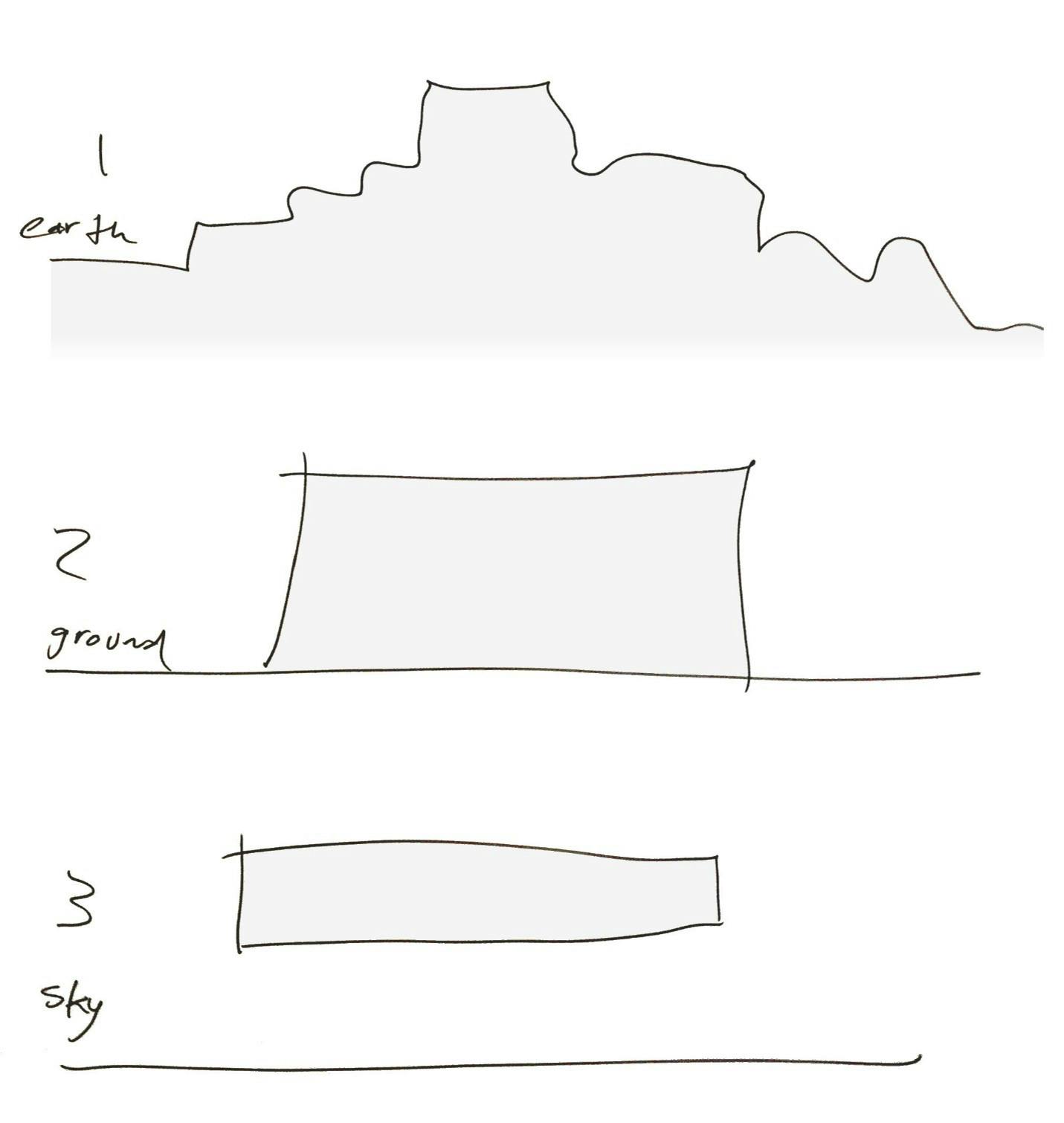
When the expansion is complete, returning visitors will notice changes that clarify their arrival and increase the connectivity between existing spaces. The primary access to The Joslyn campus has been relocated to the northern edge of the site, off James Fous Avenue, leading to a redesigned entry drive that sits on axis with a new, raised sculpture garden and Museum entrance, creating a clear sense of front and a new beginning for the Museum experience.
The horizontal texture of the new façade takes its cue from the stacked stone steps of the 1931 Joslyn Building’s monumental Grand Steps that emerge from the East side of the existing buildings in parallel with the expansion. The façade’s light-colored precast panels are embedded with vibrant pops of pink aggregate that reflect the rich, rose-colored marble of the existing buildings.
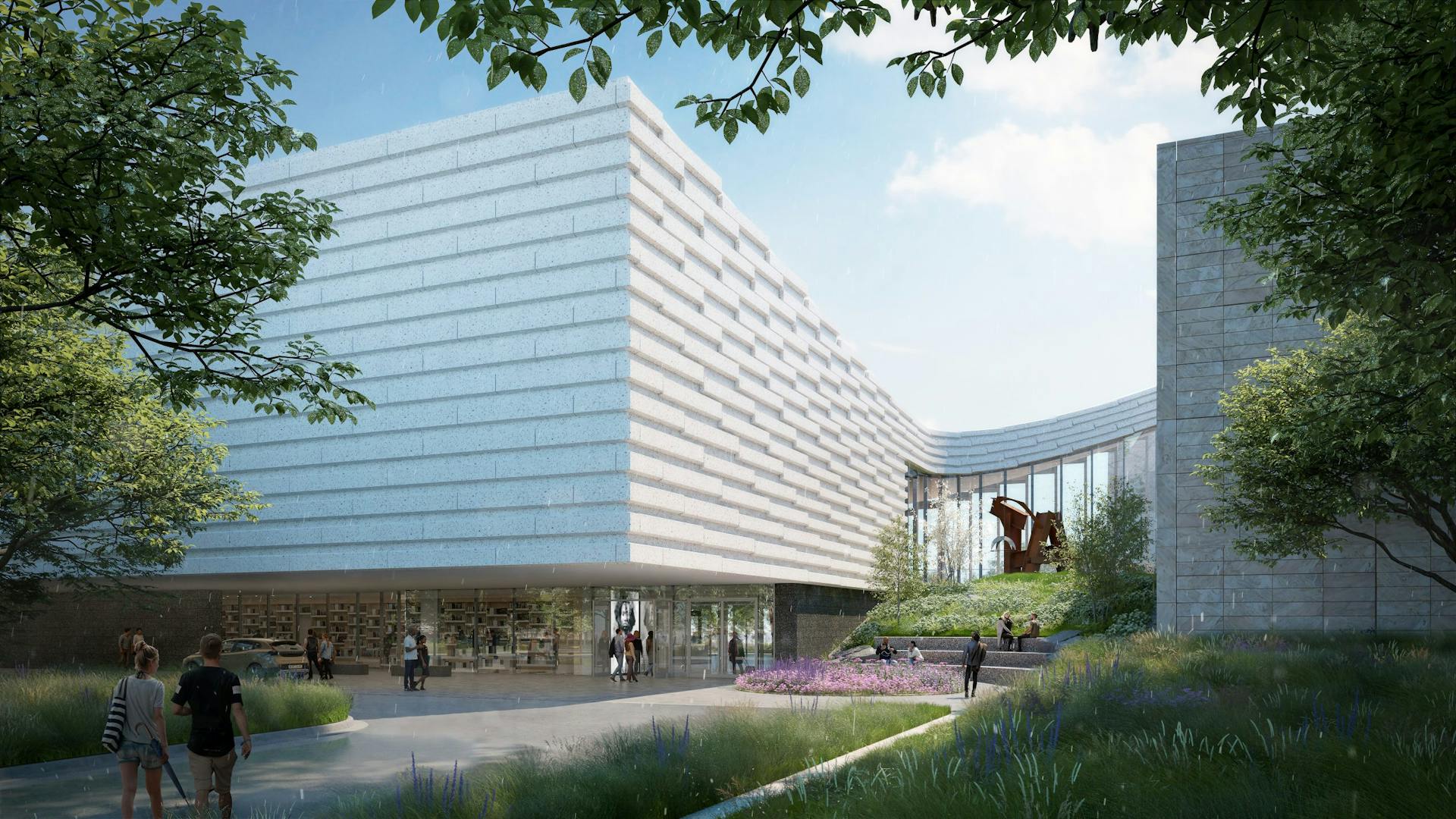
The new Phillip G. Schrager Atrium features the Welcome Desk, Museum shop, and a multi-function community room. The outdoor gardens are visible in every direction, and glass curtain walls offer breathtaking views of the architecture of the Joslyn Building and Scott Pavilion.
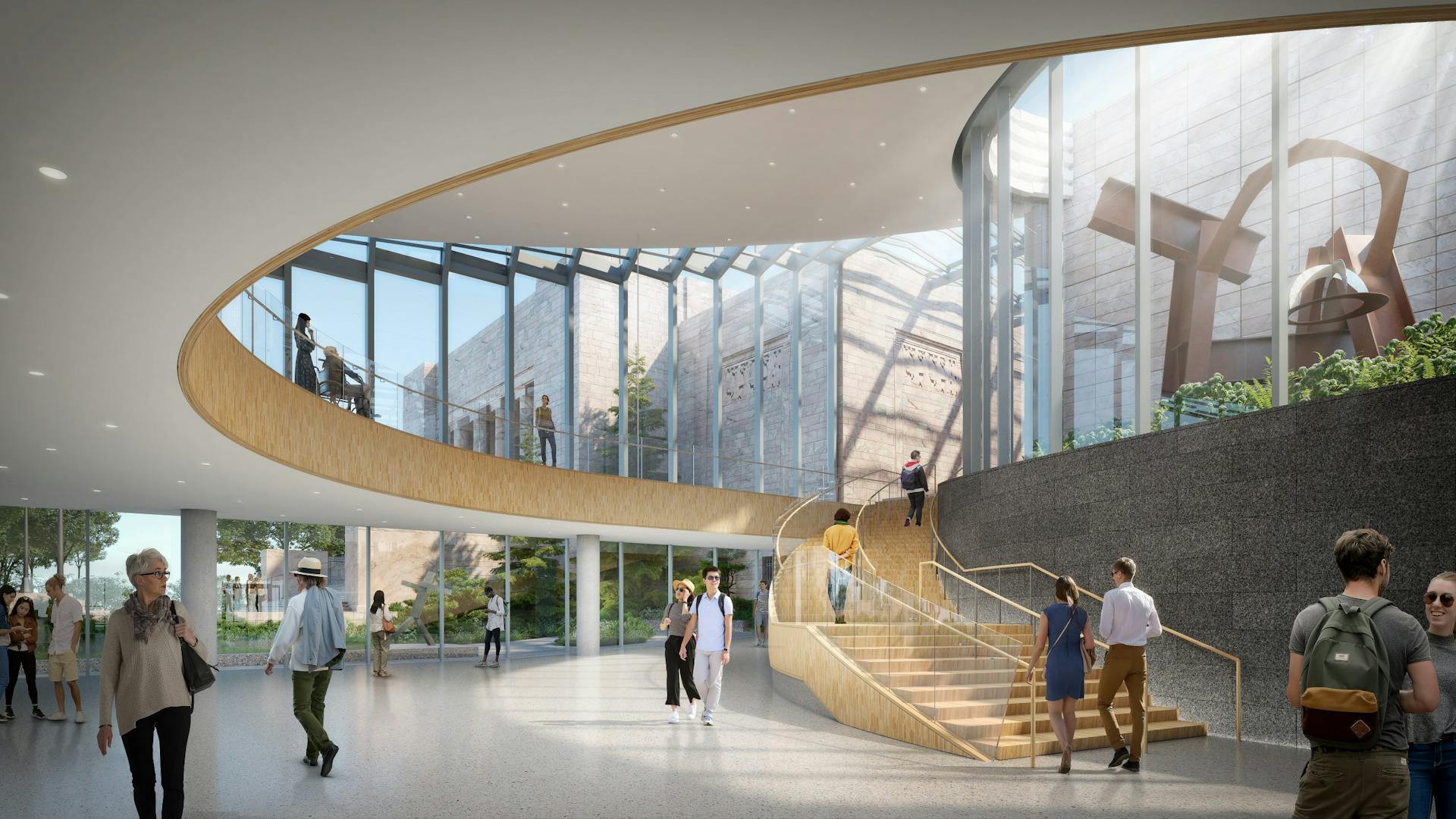
A suite of light-filled galleries in the Hawks Pavilion will be installed with the Museum’s first presentation of the Phillip G. Schrager Collection, perhaps the most significant gift of art the Joslyn has received. Comprising fifty-two paintings, sculptures, drawings, and photographs from the collection of the late businessman and philanthropist, the Schrager Collection highlights some of the most important developments and themes in postwar and contemporary art.
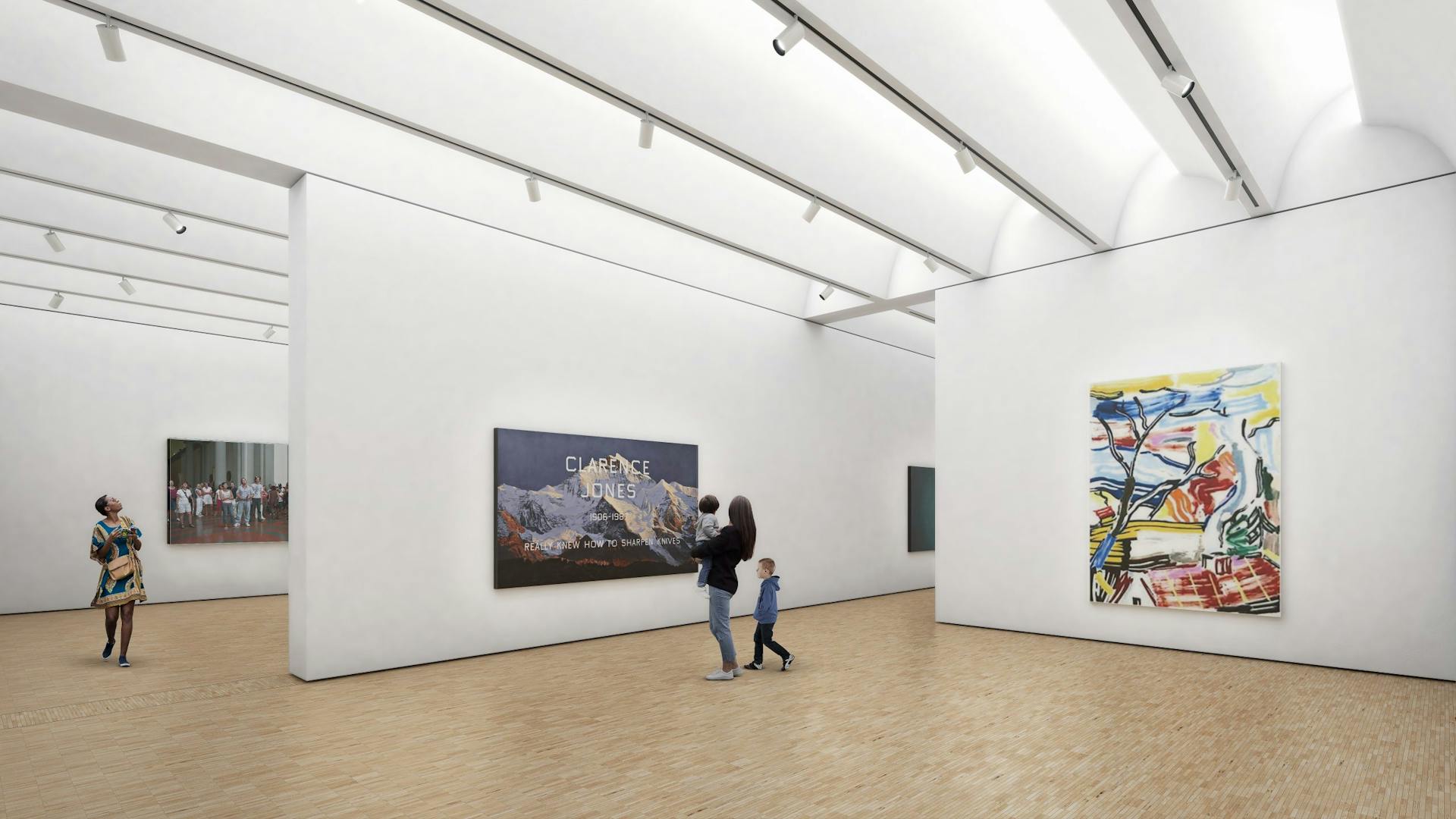
New sculpture gardens have been reimagined as a sweeping collection of landscape spaces and outdoor “rooms” that wrap the site, weaving the buildings and outdoor spaces together. Diverse drifts of plantings provide a unified composition of color, texture, and seasonal interest.
